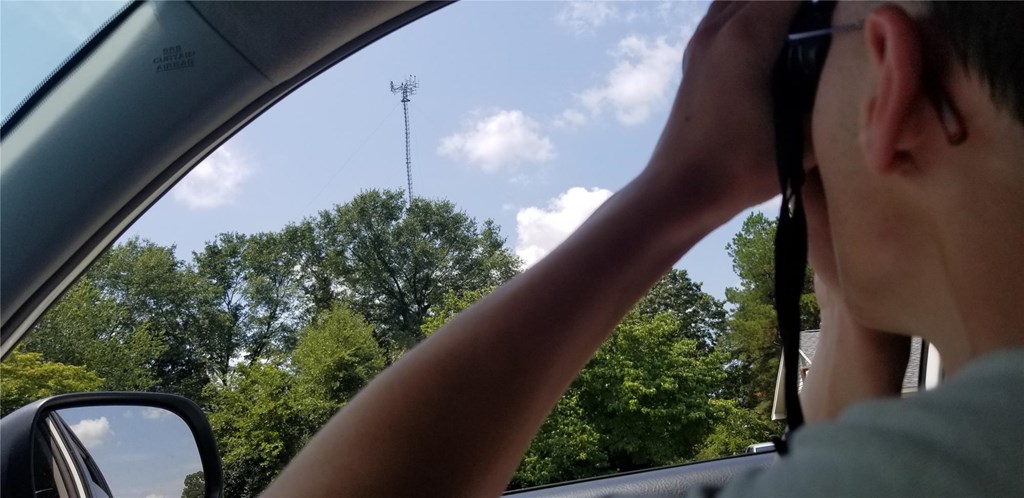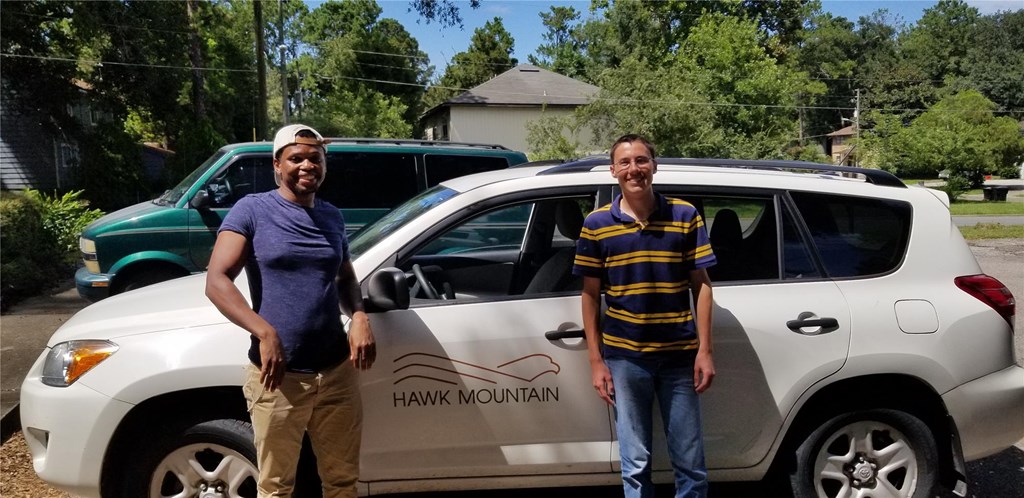Thermal Scouting
Posted on in In the Field by Bracken Brown, Hawk Mountain Biologist-Naturalist

Hawk Mountain Sanctuary is currently facilitating another round of road surveys, last performed 10 years ago, aiming to document all scavenging raptors. We are focusing specifically on turkey vultures (Cathartes aura) and black vultures (Coragyps atratus) across North and South America. During the non-migratory periods of summer and winter, HMS will adhere to consistent protocols and record all vultures visible from a set route. This will allow us to build a database comparable to the vast home range of the turkey and black vulture.
Collecting a long-term, periodic dataset will help us cultivate an understanding of habitat use, population densities, changes in regional distribution, and seasonal abundance by tracking continental and regional population trends. This informs conservation and management decisions while bolstering vulture collaborations as people take interest and join the movement to understand these intelligent scavengers.
One such survey route found me roving from the peanut fields of South Carolina to the pecan plantations of Georgia, scouring the skies for vultures. Two vulture-spotting experts and long-term Hawk Mountain supporters joined me in my search: Paul Heveran, former junior counter, current volunteer counter and birder extraordinaire currently studying at DeSales University, and Muzi Sibiya, former Hawk Mountain international science trainee and University of Florida graduate student looking at bird communities’ habitat usage in response to large herbivore browsing. In ten days, we looped across the piedmont and coastal plain regions of South Carolina, Georgia, and northern Florida, driving over 4,000 miles and tallying 3,099 vultures.

Surveys began each morning, coinciding with the vultures catching thermals and drifting out over the landscape. While driving across the kaleidoscope of properties between towns, industrial parks, fields, and pine forest, the team was enthralled as the vulture aggregations indicated their preferred land use. One mile we would peer at a narrow strip of sky between encroaching pine trees, which filled the vehicle with the smell of their heated pitch, the next we’d find ourselves stopped in a melon field as 80 swallow-tailed kites effortlessly performed acrobatics, plucking dragonflies from midair. Even counting kettles took on a new excitement as anhingas, wood storks, Mississippi kites, red-tailed hawks, and swallow-tailed kites joined the thermals, providing a wonderful mixed specie experience driven by the establishing convection. One evening while observing vulture foraging in a freshly mown field, a six-foot alligator heaved onto the field to join the feeding forays, attracted by mower-exposed frogs and eviscerated snakes.
Pastoral designations on the coastal plain complete with cattle egret closely attending their namesakes, often yielded columns of vultures hanging in the thermals above the herds. The strengthened thermals stratified the raptors as turkey vultures continued to rock their way across the landscape, effortlessly capitalizing on any small updraft, while black vultures with their directed flight and trailing legs gained altitude until nearly disappearing. When possible, any potential vulture meal was noted. Most took the form of roadkill, such as armadillos, raccoons, and deer. Tallymen would stop by the side of the road and record both perched and flying vultures; this was documented along with a mile marker so surveyed vultures could be linked with the landscape and assist in establishing population density and dispersal.

The data collected on this route will join an ever-growing database to improve vulture monitoring across their vast range and continue to track these vital ecosystem recyclers as they economize on their surroundings. Next time you watch a lone turkey vulture wobble in an updraft, or a group of black vultures loafing on a perch, take a moment to appreciate this highly successful and intelligent species and consider where their future updrafts will take them. Just as the vultures return to their communal roost sites, Paul, Muzi and I dispersed to our respective perches until our next reunion collaborating on conservation research.